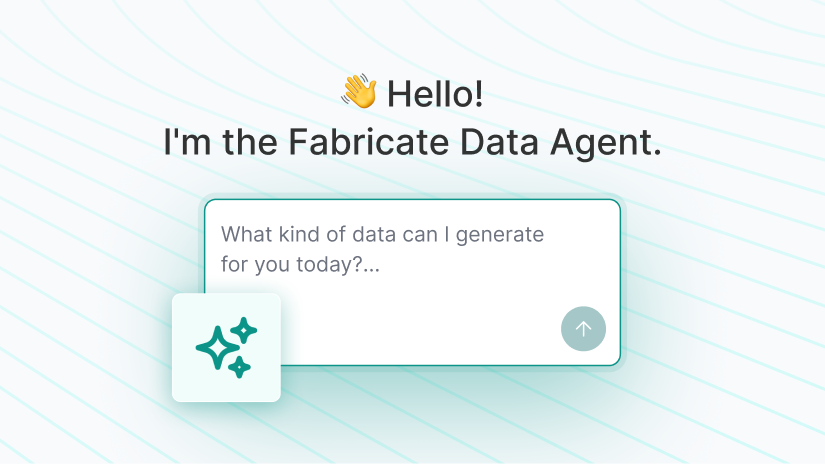What is the role of data synthesis in my CI/CD pipeline, anyway?

Oh, data synthesis, how we do love thee! (Let us count the ways.) From subsetting to anonymization to continuous generation, there’s so much to appreciate. And for developers of any stripe, it’s a must-have solution that makes your life so much easier, your customers safer, and your processes that much more efficient.
But wait. You’re probably thinking, “My CI/CD pipeline is complete without data synthesis. It does what it needs to do without any of your fancy tools. Explain your value prop, data faker.” (We just assume you talk like a 1940s gangster in this scenario, don’t question it.) Point is, you HAVE a process. And you may not take kindly to having those processes altered.
We get it. But we also have a proposition for you. Today, we’ll look at the role of data synthesis in a CI/CD pipeline… And share how utilizing it can change your programming life.
Got a second? Let’s dive in together.
What is a CI/CD pipeline?
In programming, a CI/CD pipeline is, “a framework that emphasizes iterative, reliable code delivery processes for agile DevOps teams”. This workflow may involve steps like continuous integration, testing, automation, and other stages in a software development life cycle.
In order for all of these to work, what is one of the most crucial requirements? To replicate production. From QA to security, to even your development sandboxes, you absolutely, positively need to recreate environments that look, feel, and behave like production.
What happens when your CI/CD stages don’t replicate production accurately? Bugs will slip past testing, security scans won’t be complete, and developers will build features that will never receive the level of scrutiny necessary in order to qualify their code for production release.
Shipping code without proper QA is like a car company building a car that never actually received a crash test. Which gets us to our second point: What is the crash test dummy equivalent in an automobile crash test metaphor to your CI/CD pipeline? Your test data.
What is the crash test dummy equivalent in an automobile crash test metaphor to your CI/CD pipeline? Your test data.
Simple, right?
Your pipeline has a test data problem
That’s just the dark truth of software development. We process more data now than ever before, both in and out of production environments. And testing? Testing tools are struggling to keep up. Developers can barely scrape together seed data for their sandboxes. Your whole CI/CD toolchain needs to constantly evolve, adjust, and pivot to accommodate the amount of data necessary to test today’s applications. And while there are a number of ways to beg, steal, borrow, or barter data for testing, each one has its pros and cons—and many just aren’t up to the task.
Because you don’t just need data. You need good data that functions exactly like your production data so that your tests and sandboxes actually do what they were intended to do. (Your users do tend to appreciate a bug-free experience and your developers appreciate a workable sandbox.)
This is where data synthesis enters the ring.
Data synthesis solves for these inefficiencies and more
Effective data synthesis provides a fully representative version of your production data, either through data synthesis from scratch or through secure data de-identification, without any of the risks of using the real thing. From beginning to end, no matter what tools or platforms you utilize throughout the testing process—if you feed those tools quality synthesized data, they will be more efficient every step of the way.
Capabilities of an effective data synthesis platform include:
- Continuous generation: Your data and database schema is constantly changing, so having the ability to spin up a fresh test database on the fly is essential to effective testing. You should never have to wait days or weeks for compliant test data!
- Comprehensive database support: An effective solution should be able to integrate natively with all of the leading database types, to ensure you have full coverage for your test data needs.
- Easy API integration: Having seamless API integration into your CI/CD toolchain allows you to automate workflows faster—which means you can focus on improving value stream metrics faster.
- Database subsetting: Not all tests or teams need access to your WHOLE production database. Many organizations today have upwards of several petabytes of production data. (Like eBay. Ask us how we know.) Subsetting enables you to shrink your data down to the scale and targeted datasets your developers need for their local environments while still maintaining statistical and behavioral cardinality of your data.
With a data generation platform that offers all of these features, your team will be in an excellent position to conduct better, safer, and faster development and testing.
The role of data synthesis in a CI/CD pipeline is…
Data synthesis is the key to a more accurate and more efficient CI/CD pipeline. With data synthesis, you can do everything you were doing before to build and test software throughout the development process—except better and faster. (Harder, better, faster, stronger, even.) If you want more efficient testing, you need data synthesis. The numbers don’t lie.
Want to learn more? Check out our panel at SXSW about how the state of development today demands better data. Or drop us a line to talk to an IRL Faker, and see how data synthesis with advanced data de-identification, subsetting, and synthesis capabilities can transform your CI/CD pipeline live on a demo.


.svg)
.svg)





















.svg)



